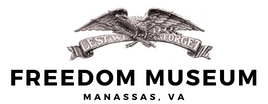Artifact Analysis: The Norden Bomb Sight
The Norden Bomb Sight
Carl Norden, a young Dutch engineer, emigrated to the US in 1904 with ambition. Later, he would become the inventor of the Norden Bomb Sight, one of America’s most highly promoted weapons.
During his early time in the country, Norden worked with American inventor and entrepreneur Elmer Sperry to create navigation tools such as gyrostabilizers for US ships. In 1913, Norden parted ways with Elmer to pursue his own company. With experience under his belt, Norden began working on the first prototype of the bomb sight in 1920 for the US Navy. Years later, under secrecy, it was finally ready for combat.
The Norden Bomb Sight, which contained an analog computer, was adopted by the US Army Air Force to aim bombs dropped by medium and heavy bombers. The computer was able to calculate the trajectory of a bomb, taking into account the crosswind, airspeed and altitude. For the times, this technology was revolutionary. Word War II Bombardier Navigators in the B17 and B24 sat the device between their legs, concentrated on the flight by looking into the eye piece, and aimed at their targets through the crosshairs. It was often advertised that properly trained Bombardier Navigators used the device to drop a bomb up to 500 pounds from 20,000 feet in the air straight into a pickle barrel. However, complete precision of the bomb sight wasn’t true in most combat. Though, it’s said to have still hit more targets with accuracy than its competitors.
The Norden Bomb Sight came to the Freedom Museum by a local resident whose father-in-law was a Bombardier Navigator in World War II. His father-in-law had acquired it from an Army surplus store after it was declassified in the 60’s. It was mounted on a plow disk to display in his home as a conversation piece. Soon after his father-in-law passed away, our local resident brought the bombsight in for donation.
“It is much better off here than collecting dust in my garage,” the man said.
The Museum happily accepted the artifact, ready to share its important purpose as an American wartime technology to minimize collateral damage and loss of innocent civilian life. He had one stipulation to handing over such a piece of history to the museum—for his father-in-law’s story to be told.
“This display tells the complete story of [his] life. When [he] was in the Army, the bombsight was [his] instrument of war. When [he] came home, [he] became a farmer, and the plow disk represents [his] life in peace time.”
Many of the Freedom Museum’s items are donated by local families to tell the story of veterans from Manassas, Manassas Park and Prince William County and their patriotic contribution to preserving our liberty. To see this artifact and much more, visit us at our brand new location.

